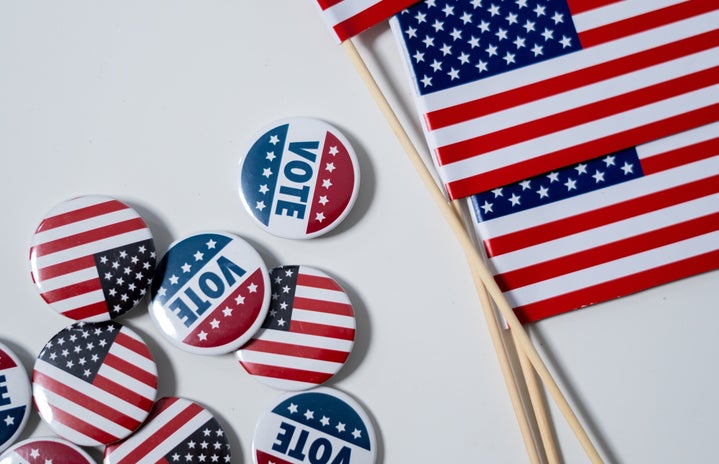On November 5th this year, the world will turn its attention to the United States of America, waiting to know who will be their 47th president. So, just a few months from now, electors will cast their votes and someone will be chosen, right? Well, not exactly, as the American electoral system isn’t as simple as one might think. Especially for us Brazillians the way through which Americans elect their president might seem a bit weird or overly-complicated. In this article, I will do my very best to try and hopefully make things a bit easier to grasp.
Right off the bat, voting in the U.S. is optional, whereas in Brazil it is mandatory. So, come election day, an American could simply not cast a vote while a Brazilian would get fined for not doing that. Registering to vote is also necessary in the U.S., and the deadlines and ways to do that vary in each state (and that is why you see so many celebrities encouraging people to vote).
Another noticeable difference is the number of political parties, while Brazil has 28 parties, the U.S. only has the Democrats and the Republicans. But that is not the whole truth. While yes, these are the biggest parties, there are a handful of third-parties. However, the two-party system limits their participation in the political scene.
Speaking of systems, let’s get into that…
primary elections and caucus
Even before the election happens, the U.S. goes through primary elections and caucuses so that each party can select which nominee will run in the later elections. Both primary elections and caucuses rely on public participation, but in slightly different ways.
The primaries are held around six to nine months before the election and voters line up to cast an anonymous ballot. Caucuses, on the other hand, involve local gatherings and participants discuss their candidates publicly.
But it’s important to keep in mind that, in this stage of the electoral process, the voter chooses delegates and not the candidates. The delegates, in turn, will choose the nominees at the parties’ national conventions (but we’ll get to that in a minute).
Each state is free to choose whether or not all voters or only the ones registered to a party can participate in these events. And the choice to hold primaries, caucuses or both is also up to each state.
Brazil does something comparable to that with the parties’ conventions that take place to appoint a candidate, present them to party members and the general public. The main difference here is that the parties have the authority to create their own rules when it comes to picking a candidate, and not the individual states.
delegates
First of all, who can be a delegate? Once again, that depends on the state and party. But, generally speaking, common citizens, party members and leaders assume this role. There are two types of delegates: pledged and unpledged, as the Democrats call them, or bound and unbound, for the Republicans.
Pledged/bound delegates must follow the results of the primaries and the caucuses, and vote for the candidate that was chosen in those. On the other hand, unpledged/unbound delegates are able to support any candidate, regardless of the primaries and caucuses.
The amount of delegates changes depending on the party, but it is usually somewhere in the thousands. That happens because all of the 50 states, plus Washington D.C and other U.S. territories need to be represented.
national conventions
The delegates that were chosen on the primaries and caucuses go to the parties’ national conventions to endorse one of the nominees depending on if they are pledged/bound or unpledged/unbound. After these conventions, the party will announce their formal candidate for president and vice-president, and only then these nominees will run in the elections later on. So, one can say that the formal choice of candidate takes place at the national conventions.
Some minor parties hold national conventions, while others don’t. And their candidate’s names may or may not appear on the ballots on election day depending on the state and if they meet that state’s eligibility requirement.
Now the stage is set the way we know it: two candidates, two parties, one election. Our next step is voting day.
General Elections
This year, the general elections are set to happen on November 5th and people all across the U.S. will voice their opinions on who should be their next president. A fun fact is that general elections always take place on the first Tuesday after the first Monday of November.
Interestingly, there is the option to vote early through the mail or in-person. Most states do not require an excuse for early voting, and in other states you need to require a ballot in order to vote early.
On voting day, Americans fill out their ballots with their choice of candidate, then these ballots are counted. Just like many other aspects of this process, this also changes based on the state. Some places opt for manual counting while others go towards a digital route.
But hold on, we’re not quite yet done…
Electoral college
This is the last step of the election, and perhaps the most outlandish one for us Brazillians. And that is due to the fact that our elections happen directly. So, when you cast your vote, it goes straight to the candidate. In the U.S., however, that’s not the case.
The electoral college decides who will be the next president and vice president and it is composed of electors. They are a group of people who are selected by their respective parties and then get voted on by the people in the general election. There are very few limitations to who can be an elector but, generally speaking, senators, representatives or people holding an office aren’t allowed to become one.
Each state has a certain number of electors that is based on the census and how many members of Congress it has. So, for example, California has 55 electors, Arizona has 10 and Wyoming has 3. Adding it all up, the electoral college is made up of 583 members from all across the American territory. If you are interested in these numbers, you can take a look at this interactive map created by the Library of Congress.
The job of an elector is to choose the next president after the general elections take place, and this choice happens at the meeting of electors. In order to win, a candidate needs to be supported by at least 270 members of the electoral college. So, in a way, the electors are the only ones who vote directly for president.
“So, why are there general elections?” you might be thinking, and it makes sense. Since the people’s vote doesn’t actually go to the candidate, then why vote at all? In simple terms and generally speaking, the party that wins in each state gets to select that state’s electors. Also, by casting a ballot, voters let their state know which candidate they want their electors to vote for at the meeting of electors.
We made it!! Now, all that’s left to do is wait for the final vote counting and the official announcement of the results! Hopefully I’ve managed to make this whole process a bit easier to understand!
———————————————————
The article above was edited by Larissa Buzon.
Like this type of content? Check out Her Campus Casper Libero for more.


